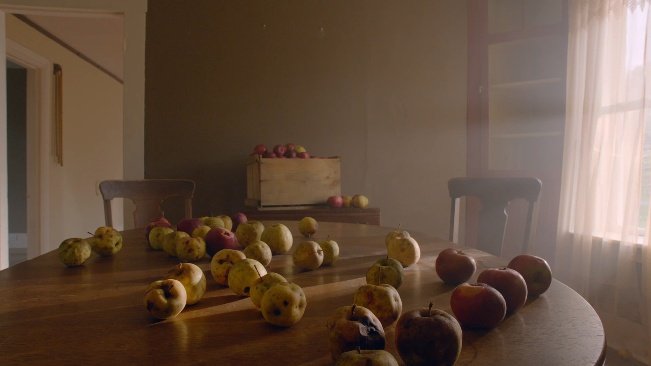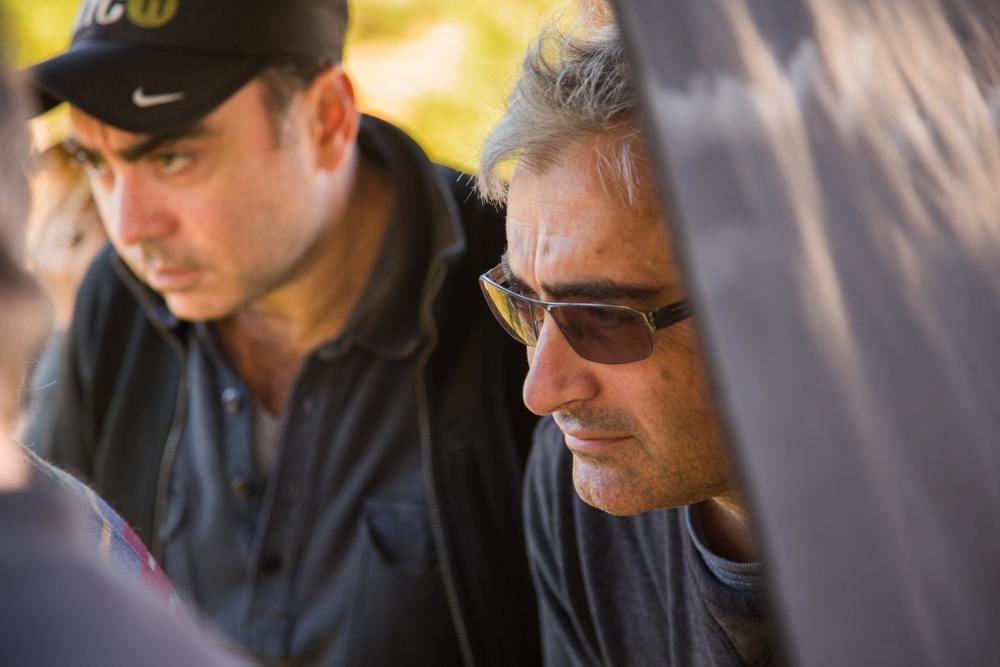
When Linda Bishop’s body was found in an empty farmhouse in New Hampshire, her death seemed pointless and puzzling. Then officials read her diary, which was lying next to her body.
The writing revealed the mental degradation that led the middle-aged woman to the house, where she waited alone for almost four freezing winter months, eating apples from a nearby tree as her only sustenance. Our documentary God Knows Where I Am explores her life and death, interviewing Linda’s family and the people around her, and asking how America’s mental health system ultimately let her down.
We shot the film in a range of different formats—35mm, 16mm, Super-16mm and digital—on a range of different cameras both vintage and new. Below, we’ll talk about why each of these choices made the most sense in telling this poignant story.

Linda Bishop photographed in her youth
Building Empathy for Someone Who is Mentally Ill
How does a filmmaker build empathy for a person who is both no longer alive and severely mentally ill in life? How does one depict the interior world of a person imprisoned by their own mind?
Linda Bishop was a mentally ill woman who was unconditionally discharged from a state psychiatric facility in New Hampshire, but also a well-educated mother who had many interests and friends. We decided to approach the issues the film raises through an artistic and intimate exploration. Rashomon was an inspiration for the initial construction of the narrative, where the audience sees different versions of an event. Our film is told from a variety of perspectives, including Linda’s own, through recollection and first person narrative. Here, the audience is presented with different views of the unraveling of a human being. Which view do you trust?

Bishop’s diary, read by actress Lori Singer in God Knows Where I Am
An early challenge was how to present Linda’s story in her own words. While we had no protagonist to interview, we did have Linda’s words, in the form of her diary. Initially we tried simply presenting the words as written on the screen, but this lacked the emotional impact that we wanted and also distracted the viewer from the imagery. We then experimented with different dry reads, but none of these had the power we wanted. We decided to inject an element of performance into approaching the diary. Linda’s own words are brought vividly to life by actress Lori Singer (Footloose, Short Cuts), who delivers an inspired and mesmerizing read of the diary. Lori spent considerable time with the real diary, even studying how the pen was imprinted onto the actual paper for clues as to what Linda might have been experiencing. She created an entire character arc for Linda. Lori’s moving performance really helps the viewer enter into the mind of Linda and feel for her, and she serves as the key guide, taking you on what becomes a tragic journey.
Content and Form in the Artistry of Documentary Filmmaking
In art, there should be some relationship between content and form. Often in documentary filmmaking, content becomes the primary focus, but we wanted to make a theatrical documentary that could be projected and experienced in a movie theater, and stand on its own as an artistic film. This was particularly important given the subject matter, as Linda was a highly artistic person and experienced the world around her while she lived in that farmhouse in a very visual way.
In creating the film together with our cinematographer Gerardo Puglia, we were very conscious of exploring the visual medium in a purposeful manner. We chose to use film as well as digital video. Gerardo had worked as a DP for Eastman Kodak, and was quite well acquainted with the qualities of individual film stock and cameras. Gerardo also had numerous creative friendships with master cinematographers like Gordon Willis, Vittorio Storaro, Haskell Wexler and Roger Deakins, and brought a wealth of experience to the project. Wexler once wrote to Gerardo that the only way to get better as a cinematographer was to find better things to shoot and try to find more beauty in the world around us. Storaro taught Gerardo to train his eye in the subtlety of colors and learn how hue can inform mood, and also how to move the camera in a very subtle way, making the camera a principal character in the film. Deakins is a master at diffusing light and using the crane to float a camera in space. Willis was always taking risks when he shot with underexposure, to explore darkness in tonality, and would try to find details in shadows. All of these concepts were reviewed and considered as we began our film.

Apples, Bishop’s only food for months, strewn across a table in God Knows Where I Am
As Linda was an art history major before her break with sanity, the aesthetic and visual nature of telling the story was explored in ways that reference both film history and art history. The work of painters like Hammershoi and Wyeth and filmmakers such as Tarkovsky and Malick influenced the palate of the film. Malick’s ability to depict consciousness was an inspiration. Tarkovsky’s depiction of empty spaces, and creating emotion through empty space and moving light, also inspired. Visual reference to religious iconography was also made because Linda’s diary becomes increasingly spiritual as it moves towards the end of Linda’s life.
Shooting with Historical Cameras
The depiction of Linda’s conscious state was shot in 35mm, 16mm and Super-16mm film, each for different thematic reasons. We used a variety of cameras, including a 1939 Bell & Howell Eyemo (a camera used in WWII photography) and a 1980s Aaton XTR Prod, to visually depict dreamscapes and nostalgia. We wanted to elevate the visual quality of the film as a way to honor Linda but also to reflect the content of the piece. When using the Eyemo, we used military lenses called Miltars (mostly 25mm) that were uncoated, which allowed for more flaring of the light and helped to create a more painterly quality in the images. This gave a feeling of a visual aura, which worked thematically, as we were also exploring the nature of light and how it played in the rooms Linda inhabited.

A scene from inside the house where Bishop found refuge
We also wanted to explore the absence of light, as Linda was alone in a darkened house for many hours in a given day. To do this, we diffused incoming light with curtains if we were shooting during the daytime, and used natural light at night, including candle, moon and starlight. If we needed more light at night, we created Chinese lanterns that we floated above where we shooting. The Aaton XTR Prod we used was the last model that Aaton made before they went out of business, and we coupled this with a 8-64mm Canon Lens that was capable of focusing down close and also wide, and was a particularly sharp lens for the Super-16 format. Interestingly, the Aaton XTR Prod was originally designed in France for documentary filmmaking, and could sit comfortably on your shoulder.
Shooting with Super-16mm Film
Linda’s diary is filled with references to food, and abounds with recipes of meals she hoped to cook. In an abandoned farmhouse and deprived of iPhones, the internet and electricity, Linda would not be looking at hyper-real or current internet based images of food, but instead seeing old advertisements of food and images in her mind’s eye from her memory of food. As she hid in the farmhouse attic, avoiding being seen by neighbors, Linda found magazines from the 1970s, many of which contained food advertisements. Those ads have a certain patina and do not feel like ads from today. When Linda wrote about how hungry she was and how she dreamt of a Thanksgiving dinner, we wanted to present the imagery of food in both an enticing and dreamy way, similar to the way food is presented in films like Babette’s Feast. When you see that film, you feel hunger. We wanted our audience to feel hunger but also that they were seeing a dream. Using Super-16 with the Aaton XTR Prod to shoot the food allowed us to capture a sense of both nostalgia and unease, visually emphasized with the grain of the film. Grain, which today many people eschew in filmmaking, gives a texture to the appearance of the image, and a sense of the past. We created images that represent a distorted reality of a mentally ill woman yearning for and imagining food, but food as imagined from food commercials of the past.
Shooting with 35mm Film
We choose 35mm film to depict what Linda may have seen looking outside the window or within the room of the farmhouse where she died, because we did not want to use a medium that felt too immediate or hyper-transient. Working in 35mm requires deliberation and patience to compose shots. In a metaphoric sense, while Linda was in the farmhouse, she was living in the analog world of film—a world not completely rooted in modernity. She spent her time living by natural light, writing in a diary, collecting apples and dreaming; these are not digitally based activities. Furthermore, there was no light or heat in that building, so it was as if Linda was living completely unplugged in a world of the past. She was very conscious of the natural beauty around her—the historic barn, lilac branches, a mother deer with her fawn—and 35mm film image has an extremely beautiful quality to it. The 1939 Bell & Howell Eyemo captured some this beauty and also was used to map the internal landscapes of the house as well as evoke the sense of memory. We also used a spring-wound Eyemo which gave the images a sense of uneasiness with inconsistent exposure and flicker quality.

Jedd and Todd Wider, directors of God Knows Where I Am
Shooting with 16mm Film
After Linda was discharged from the state psychiatric hospital, she wandered 10 miles away along various paths in the forest, feeling a sense of freedom until she ultimately arrived at the farmhouse. We wanted to capture the vigor and agitation of her journey from the hospital, and used a 16mm 1966 Bolex and 16mm 1972 Canon Scoopic to film this. We wanted to free these shots from any sense of formalism and openly embraced the light streaks, soft grainy overexposed images and lens flares that naturally come with shooting in 16mm. We freed the camera without even looking through the viewfinder. In these 16mm scenes, the viewer does not merely see but also experiences the action of the newly liberated Linda, walking vigorously from the hospital, out of town and through the forest towards the farmhouse. The grain echoes the vigor. The Bolex was used by a number of experimental filmmakers in the past, like Maya Deren. It has a unique ability to create transcendental images and was known as a camera of poetry, so it was appropriate for what we were trying to convey here. The Canon Scoopic was a news camera, and we employed it to capture the event of her leaving the hospital, as this is the critical event that sets the direction for Linda’s tragic course.
Share:
